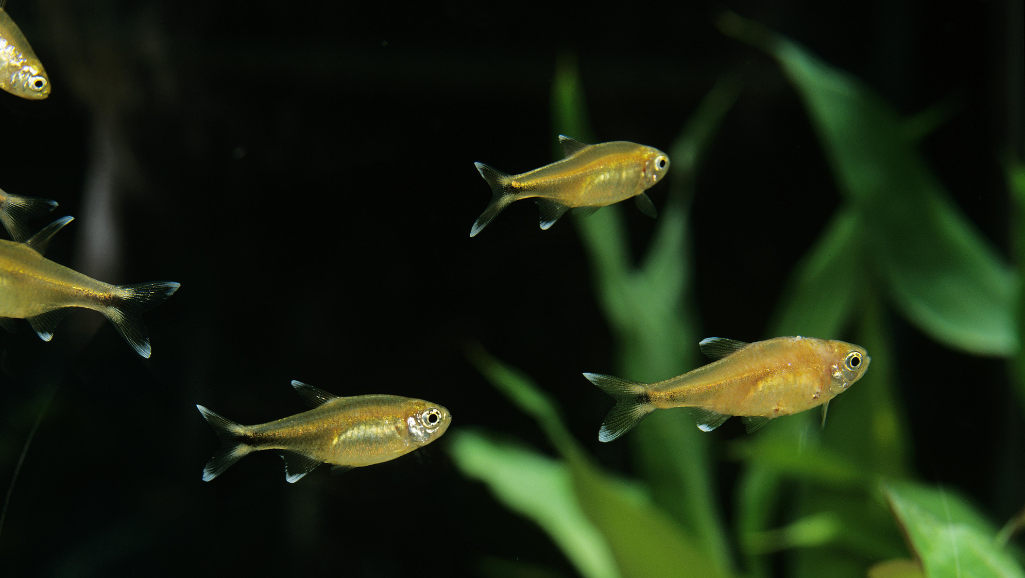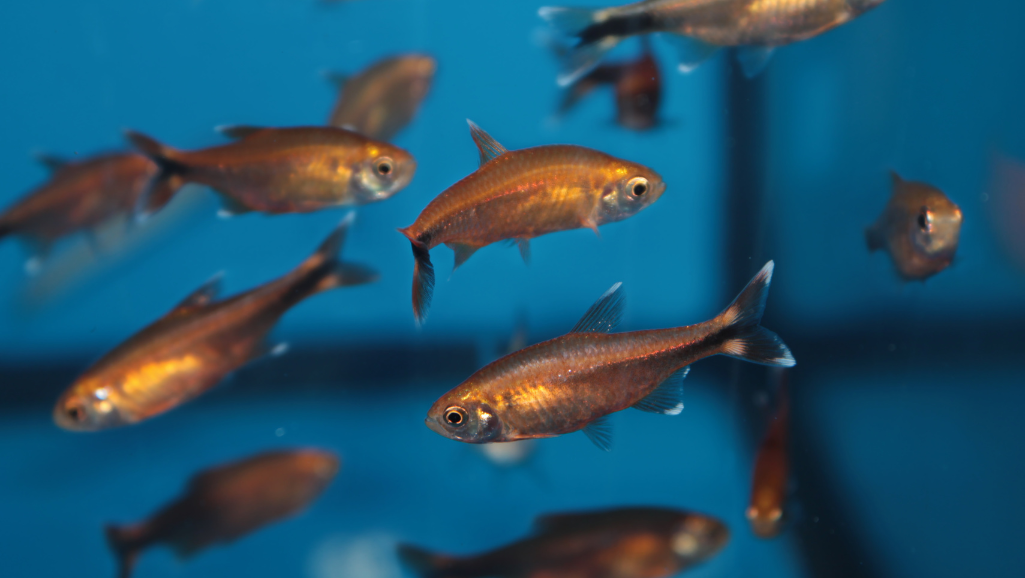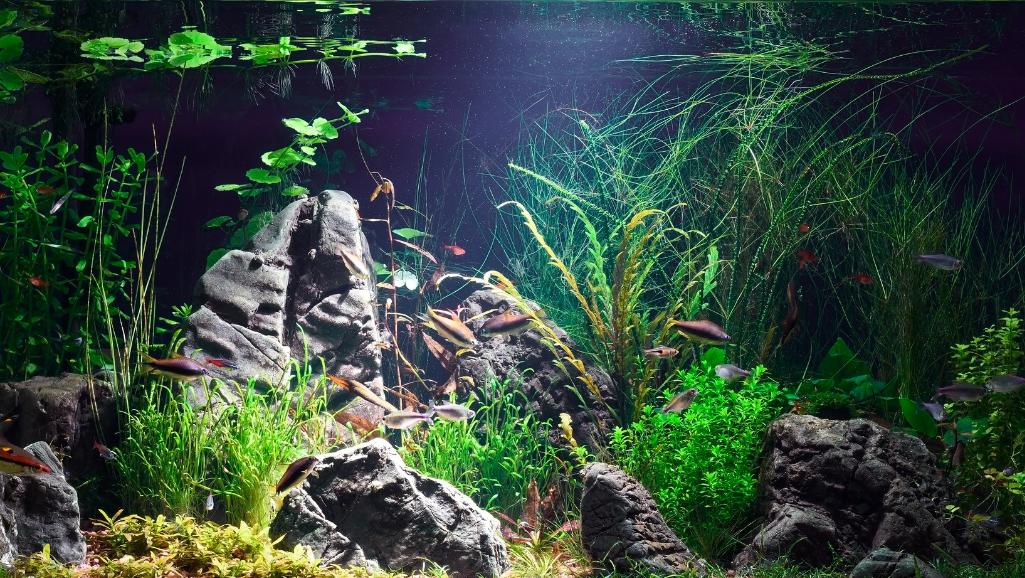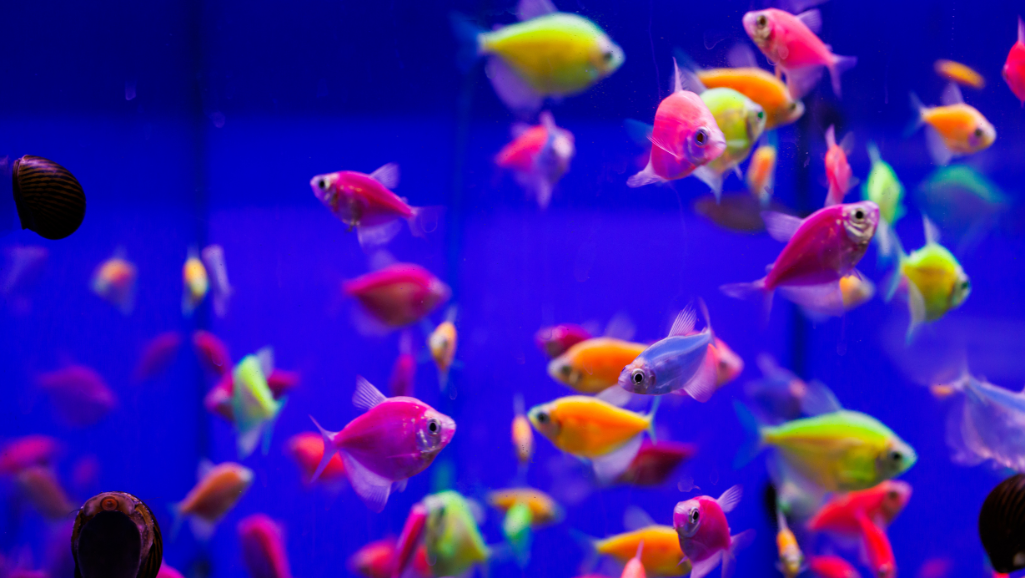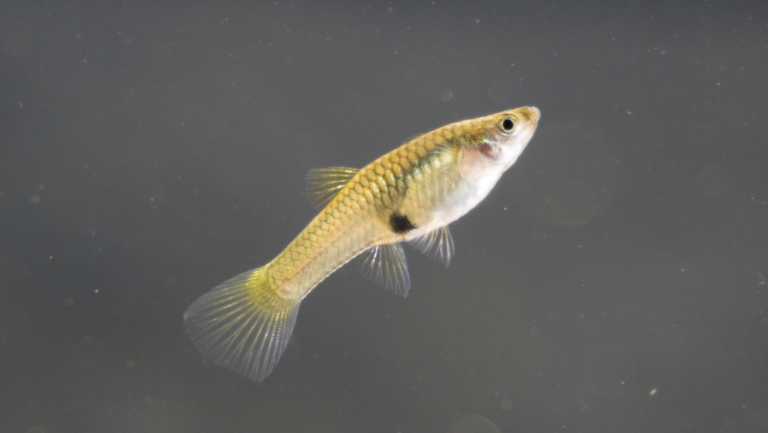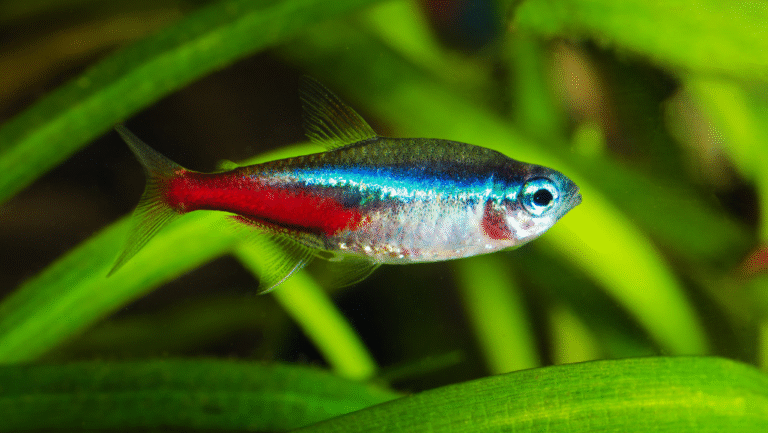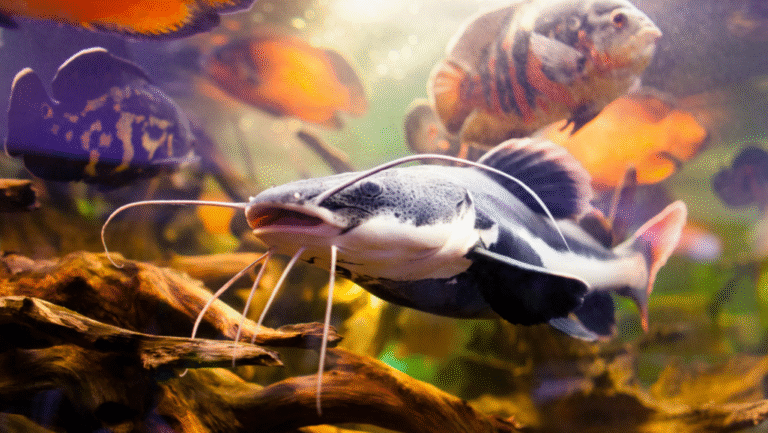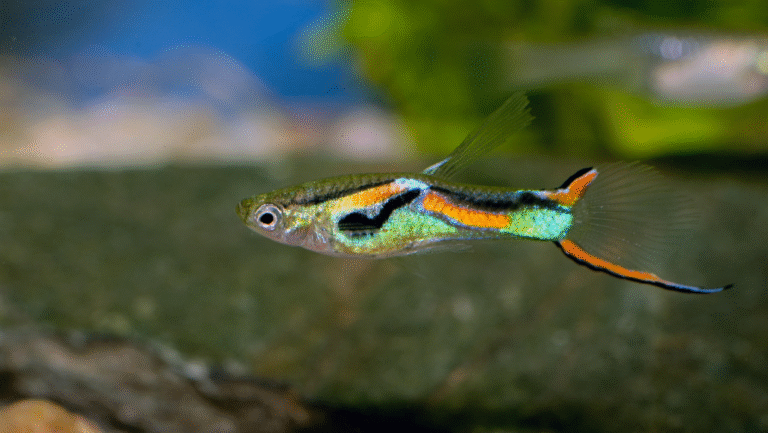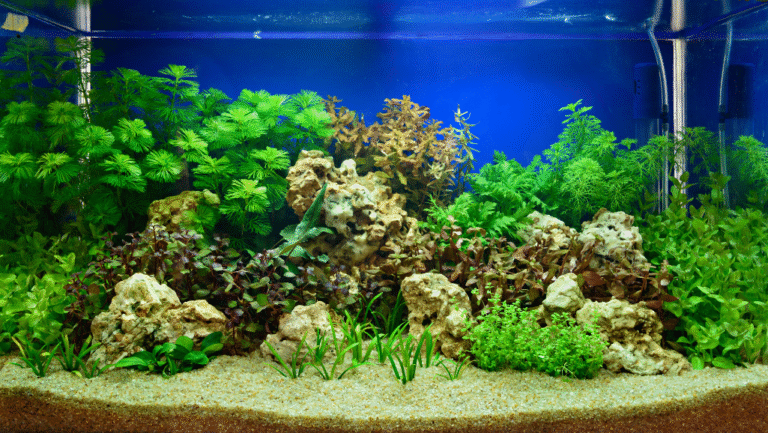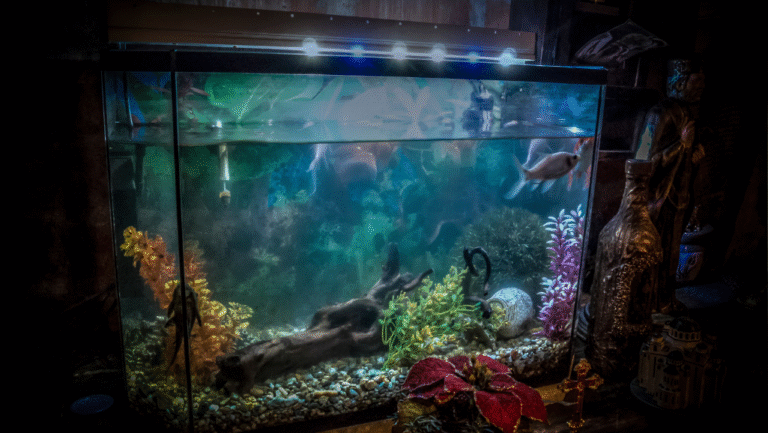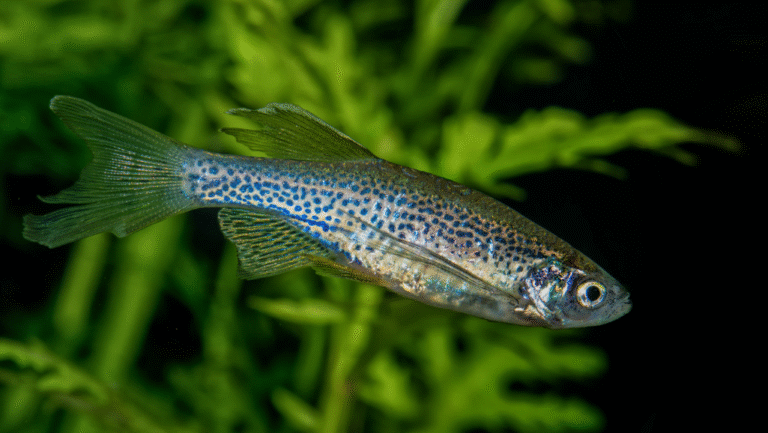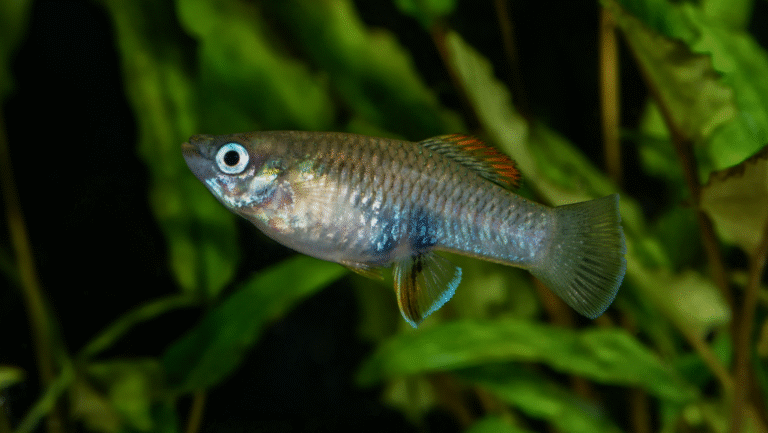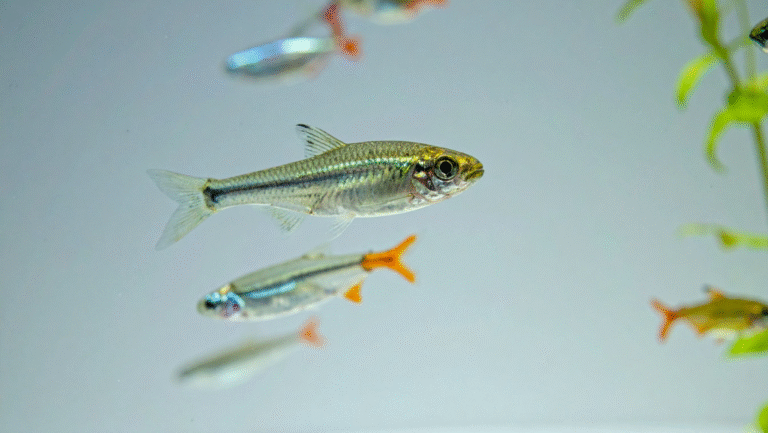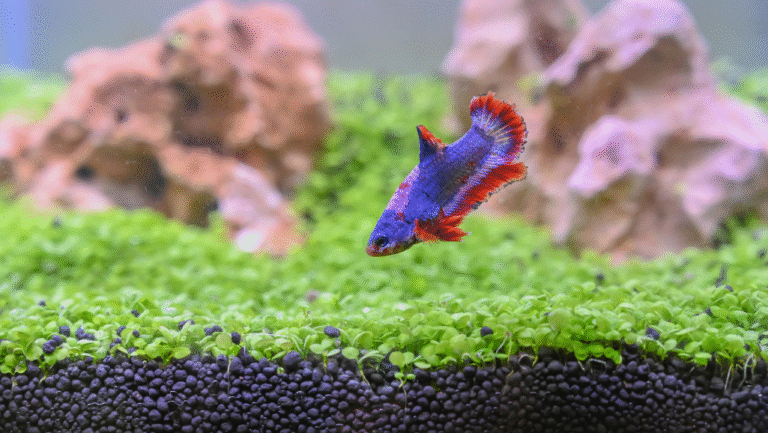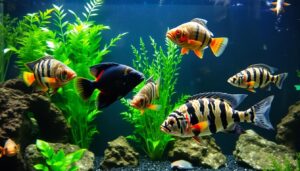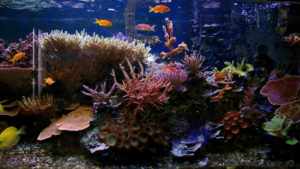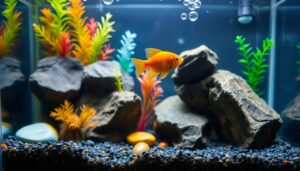Bright contrast and calm behavior make this small characin a favorite for planted aquaria. The species reaches about 1.6 inches and shows a luminous white stripe above a dark band with a ruby eye flash.
They originate from the Paraguay basin and thrive in community tanks when kept in groups. These fish are hardy, adapt to a range of pH and temperatures, and reward steady maintenance with lively shoals.
Setups that emphasize darker substrate, driftwood, and open swim lanes help the colors pop. Ideal for beginners and experienced hobbyists alike, they occupy the mid-to-top levels and add synchronized motion to any tank.
For a practical care overview, see black neon tetra care to plan a healthy, inspiring display.
Key Takeaways
- Peaceful schooling species that brightens planted aquaria.
- Adults reach about 1.6 inches—good for small to medium tanks.
- Tolerant of varied pH and temperatures when kept stable.
- Best showcased with darker substrate, plants, and open swim space.
- Easy care makes them suitable for community setups and beginners.
Meet the Black Neon Tetra: Identification, Size, and Origins
A crisp white stripe above a bold dark band and a slim red-over-yellow eye rim make this fish easy to recognize in a planted aquarium.
The species Hyphessobrycon herbertaxelrodi belongs to the genus Hyphessobrycon in the Characidae family. Adults reach a size of about 30–40 mm (1.2–1.6 inches), with females often deeper-bodied and a touch larger than males.
How to tell this species from neon tetras at a glance
Look for adjacent white-over-black lateral stripes; neon tetras show a continuous blue line with red on the lower half instead.
Body shape helps too: this fish has a slightly taller body depth, which gives a stouter profile in the water column. The Diamond/Brilliant variety lacks the white stripe and shows reflective head scales.
Scientific profile and native basin
Taxonomy matters: order Characiformes, family Characidae, genus Hyphessobrycon, species H. herbertaxelrodi (Géry, 1961).
Its native range is the upper Rio Paraguai basin in Brazil’s Pantanal wetlands, though introduced populations exist elsewhere. Remember: the name “black tetra” properly applies to Gymnocorymbus ternetzi, a different fish.
- Diagnostic cues: white-over-black stripes, red-yellow eye band.
- Typical size: about 1.2–1.6 inches when mature.
- Habitat: clear, plant-rich tributaries and seasonal floodplains in the Paraguai basin.
Quick-Start Care Overview for a Thriving Freshwater Aquarium
Successful care begins with consistency: stable temperature, gentle flow, and a darker planted layout help these small characins relax and show their best colors.
Aim for water between 72–80 °F (22–27 °C) and a mildly acidic to neutral pH (about 5.5–7.5). Soft to moderately hard water suits captive-bred stock. Stability matters more than perfect numbers.
Stocking and space: keep a group of at least 6; a 15-gallon tank fits six fish, while a 20-gallon makes 8–10 feel secure and showy.
- Filter gently: moderate flow keeps the water clear without stressing swimmers.
- Planted layout: darker substrate, plants, and open lanes let the school relax and contrast well.
- Routine: weekly partial water changes, debris removal, and filter care maintain health.
- Diet: offer varied, high-quality small foods that reach mid-to-top water.
Plan peaceful community mates and keep a short checklist: temperature, pH, hardness, nitrate control, and weekly visual checks. This simple list makes long-term aquarium success intuitive and rewarding.
Setting Up the Tank: Substrate, Plants, and Aquascape that Make Colors Pop
Create an aquascape that mirrors clear, plant-rich streams to help your school’s white-over-dark stripes shine.
Choose a darker substrate such as fine sand or dark gravel to increase contrast. A dark background also makes the stripes read as bright, crisp lines.
Plant and hardscape choices
Plant generously with species like Echinodorus, Eleocharis, and Ludwigia to offer shade and texture. Place taller groups at the back and sides to frame open swim lanes in the center.
Add driftwood roots and a light scatter of leaf litter to release gentle tannins and recreate natural chemistry. These elements calm fish and add visual depth.
Size, schooling, and flow
Keep a 15-gallon tank for six fish, but opt for a 20-gallon or larger if you want a larger, coordinated school. More animals produce more synchronized movement and a stronger display.
- Use gentle, diffused flow to avoid pushing small swimmers.
- Keep lighting low to moderate to reduce glare and encourage cruising midwater.
- Anchor the layout with a focal root or stone and repeat plant textures for balance.
Tip: Make sure the tank is large enough to allow schooling behavior—open space plus dense edges equals a relaxed, showy group.
Water Parameters and Routine: Stable, Clean, and Within Range
Stable chemistry and regular care are the backbone of a clear, healthy aquarium for small schooling fish.
Temperature, pH, and hardness tolerance
Target 72–80 °F (22–27 °C) for comfort and easy stability with most U.S. tap water after conditioning. The broader tolerance is 68–82 °F (20–28 °C).
Aim for a pH near 6.0–7.2 for steady results. Captive-bred stock often handles 5.0–7.5, but sudden swings stress the animals.
Reported hardness ranges vary widely. Keep hardness moderate and consistent to reduce shock and disease risk.
Filtration, flow, and maintenance cadence
Use a right-sized filter with good biomedia and a gentle return. Avoid harsh currents; these top-level swimmers prefer calm lanes.
- Weekly: partial water change and gravel vacuuming.
- Daily to weekly: check heater and thermometer at set times to confirm readings.
- Ongoing: live plants help buffer nutrients and polish water.
Add small bottom foragers like pygmy Corydoras to reduce leftovers and keep the substrate tidy. Source stock from reputable retailers and quarantine new arrivals to shield your display from trade-driven pests.
Diet and Feeding: A Varied Menu that Fuels Color and Health
Feeding the right mix of staples and treats fuels color, breeding readiness, and steady growth in small schooling fish.
Micro flakes and nano pellets
Build a routine around high-quality micro flakes and nano pellets sized for small mouths. These settle at the mid-to-top column where these swimmers feed.
Power foods
Live and frozen options
Rotate in frozen and live items like cyclops, daphnia, and baby brine shrimp to boost color and condition fish for spawning. Use these a few times per week.
Feeding tips to reduce waste
Portions, prep, and cleanup
Offer small portions two to three times daily and watch for complete consumption within a minute. Pre-soak larger pellets, crush flakes lightly, or use feeding rings to focus delivery.
- Pair with cleanup crews: pygmy Corydoras help remove leftovers.
- Keep a feeding card: log foods and rotation to balance proteins and plant matter weekly.
- Store smart: keep dry foods cool and thaw frozen items before use.
Behavior and Tank Mates: Peaceful Schooling in a Community Aquarium
These small characins show their best behavior when kept in a confident group. Kept in schools of 8–10 or more, they display calm, coordinated movement that livens a planted tank.
They favor the upper half of the aquarium and will cruise mid-to-top water, so pair them with species that occupy other layers for visual balance.
- Ideal companions: rasboras, small characins, Corydoras, Otocinclus, and gentle gouramis.
- Layer harmony: use bottom dwellers and midwater swimmers to animate every level of the aquascape.
- Shrimp caution: adults often ignore dwarf shrimp, but shrimplets may be eaten—add dense moss to boost survival.
- Avoid: nippy or predatory species; these fish need peaceful neighbors to show natural schooling.
“More fish means more confidence and a more natural, mesmerizing display.”
Introduce adults together and in groups. In longer tanks they can stretch into sweeping arcs that attract attention and calm the whole community.
Breeding Black Neon Tetras: From Conditioning Adults to Raising Fry
Successful breeding starts with well-conditioned adults and a calm, controlled tank environment.
Selecting and conditioning stock
Choose deeper-bodied females and active, well-colored males. Condition adults on live foods like daphnia and baby brine shrimp for 7–10 days to boost readiness.
Spawning setup essentials
Use a small breeding tank with mature, very soft, slightly acidic water. Keep light very dim and add spawning mops, fine plants, or a layer of marbles/mesh to protect eggs.
Add a few catappa leaves to darken water, foster biofilm, and make the site feel natural.
Egg care and raising fry
Eggs are scattered; remove adults as soon as eggs are seen. Adults will eat eggs and hatchlings.
Provide gentle filtration with a sponge filter and light aeration to keep water clean without harming fry.
Feed newly free-swimming fry infusoria or a fine commercial fry food, then transition to Artemia nauplii (baby brine shrimp) as they grow.
- Spawn often at dawn—watch early mornings.
- Keep routine water checks and tiny, frequent feedings.
“A calm tank and steady small meals give fry the best start.”
Troubleshooting & Pro Tips: Color Fading, Shoaling, and Water Issues
Many hobbyists find that simple tank tweaks restore vibrancy and calm in their fish.
If colors fade, check lighting levels, add darker hardscape or leaf litter, and confirm temperature and water pH are steady. Stable conditions often bring back bright scales and normal behavior within days.
For timid shoals, increase group size and add plant thickets. Reduce harsh flow and create more line-of-sight breaks with wood or rocks. More cover and numbers build confidence in a community tank.
When fin-nipping or chasing appears, re-evaluate tank mates and rearrange decor to diffuse tension. Surface film and cloudiness respond well to improved mechanical filtration, regular changes, and light aeration from a sponge filter or airstone.
Prevent leftover food by trimming portions and adding bottom cleaners. This reduces waste accumulation and protects long-term health. Note sex differences by body depth; deeper-bodied fish are usually females when planning breeding.
“Rely on reputable retailers and aquarium references like Seriously Fish for stock and guidance.”
- Expect discreet shoaling at calm times; tight schooling can mean stress.
- When in doubt, test water and observe scales and body condition over two to three times before acting.
Conclusion
Conclusion
When you pair steady water, the right plants, and a balanced menu, this species rewards you with lively, synchronized motion.
Black neon tetra owners often find success by sizing a tank large enough for a confident group, using darker substrate, and keeping simple, consistent routines. Aim for stable pH and temperature and a varied diet of flakes, nano pellets, and periodic live or frozen foods like brine shrimp.
Remember the species’ roots: hyphessobrycon herbertaxelrodi hails from the upper Paraguai basin and thrives in planted freshwater aquaria that mimic clear, sheltered streams. For breeding, condition adults, protect eggs with mops or mesh, and start fry on tiny first foods before moving to Artemia nauplii.
Keep care straightforward, build a calm community, and step back—your aquarium will repay you with a moving canvas of color and calm.
